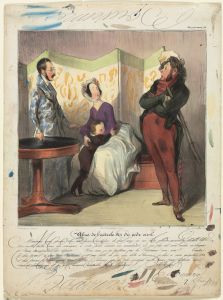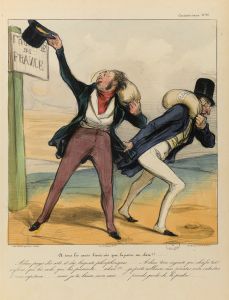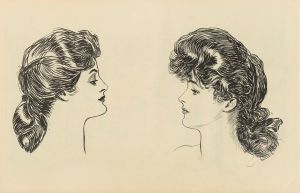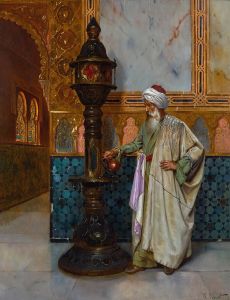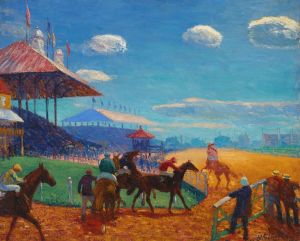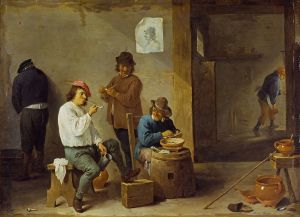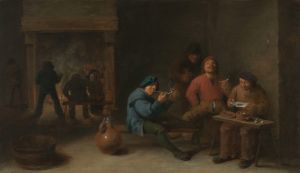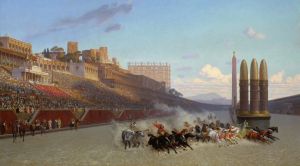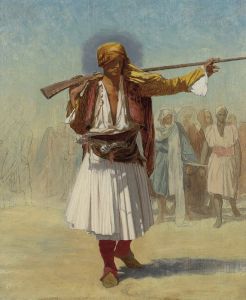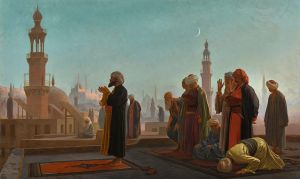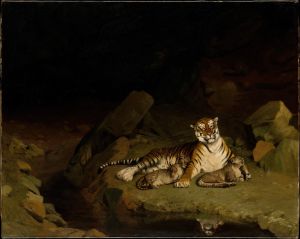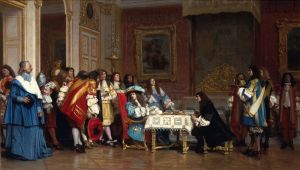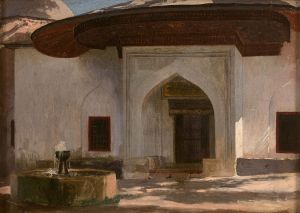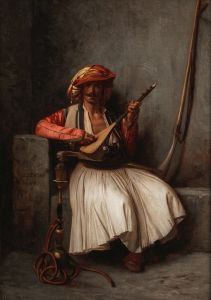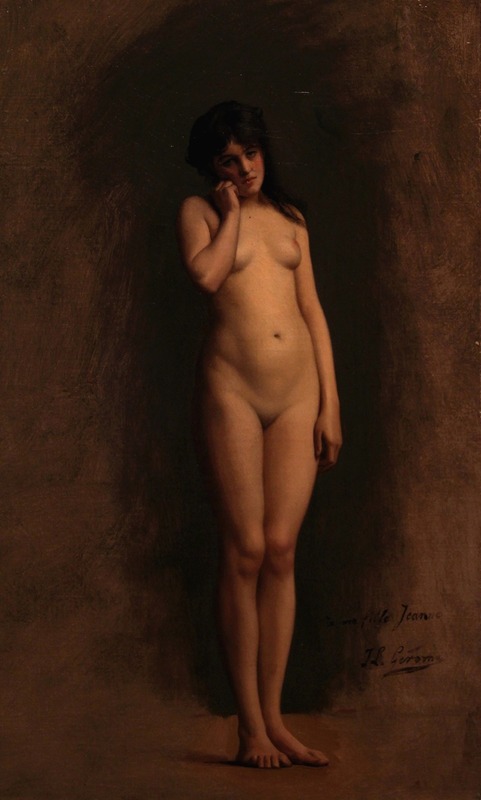
Study for Slave Market in Ancient Rome
A hand-painted replica of Jean-Léon Gérôme’s masterpiece Study for Slave Market in Ancient Rome, meticulously crafted by professional artists to capture the true essence of the original. Each piece is created with museum-quality canvas and rare mineral pigments, carefully painted by experienced artists with delicate brushstrokes and rich, layered colors to perfectly recreate the texture of the original artwork. Unlike machine-printed reproductions, this hand-painted version brings the painting to life, infused with the artist’s emotions and skill in every stroke. Whether for personal collection or home decoration, it instantly elevates the artistic atmosphere of any space.
"Study for Slave Market in Ancient Rome" is a preparatory work by the renowned French artist Jean-Léon Gérôme, who was a prominent figure in the 19th-century academic art movement. Gérôme is well-known for his detailed and historically themed paintings, often depicting scenes from antiquity, the Orient, and classical mythology. This particular study is related to one of his larger works that explore the theme of slavery in ancient Rome.
Jean-Léon Gérôme was born on May 11, 1824, in Vesoul, France, and he became a leading figure in the academic art scene of his time. He studied under Paul Delaroche, a significant influence on his style, and later attended the École des Beaux-Arts in Paris. Gérôme's works are characterized by their meticulous attention to detail, historical accuracy, and dramatic compositions.
The "Study for Slave Market in Ancient Rome" serves as a preliminary exploration of themes and compositions that Gérôme would later refine in his finished paintings. Studies like this one were common practice among academic artists, allowing them to experiment with different elements before committing to a final composition. These studies often include sketches of figures, architectural elements, and other details that would contribute to the overall narrative of the completed work.
In this study, Gérôme likely focused on capturing the atmosphere and dynamics of a slave market in ancient Rome. Such markets were a significant aspect of Roman society, where slaves were bought and sold as property. Gérôme's interest in this subject reflects the 19th-century fascination with ancient civilizations and their customs. His works often aimed to provide a window into the past, offering viewers a glimpse of historical events and daily life in ancient times.
Gérôme's paintings are known for their historical accuracy, and he often conducted extensive research to ensure the authenticity of his depictions. This commitment to detail is evident in the architectural elements, clothing, and other aspects of his works. His ability to blend historical accuracy with artistic imagination made his paintings both educational and visually captivating.
The "Study for Slave Market in Ancient Rome" is an example of Gérôme's skill in capturing complex human emotions and interactions. His works often feature a diverse range of characters, each contributing to the narrative and emotional depth of the scene. This study would have allowed Gérôme to experiment with the placement and expressions of figures, ensuring that the final composition conveyed the intended message and atmosphere.
Jean-Léon Gérôme's contributions to the art world extend beyond his paintings. He was also a respected teacher, influencing a generation of artists through his role as a professor at the École des Beaux-Arts. His emphasis on technical skill and historical accuracy left a lasting impact on the academic art tradition.
In summary, "Study for Slave Market in Ancient Rome" is a testament to Jean-Léon Gérôme's dedication to historical accuracy and his ability to bring the past to life through art. This preparatory work highlights his meticulous approach to composition and his interest in exploring complex historical themes. Through studies like this, Gérôme laid the groundwork for his larger, more detailed paintings that continue to captivate audiences with their blend of history and artistry.





